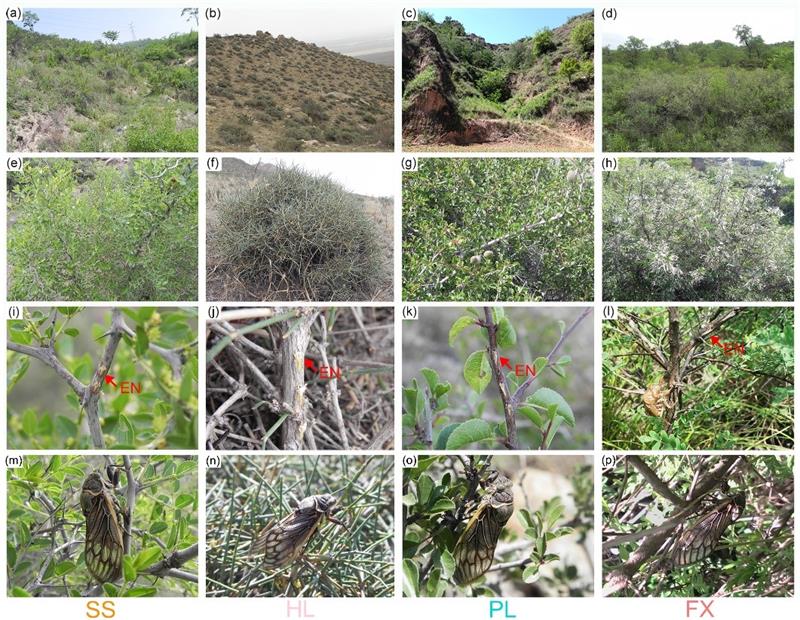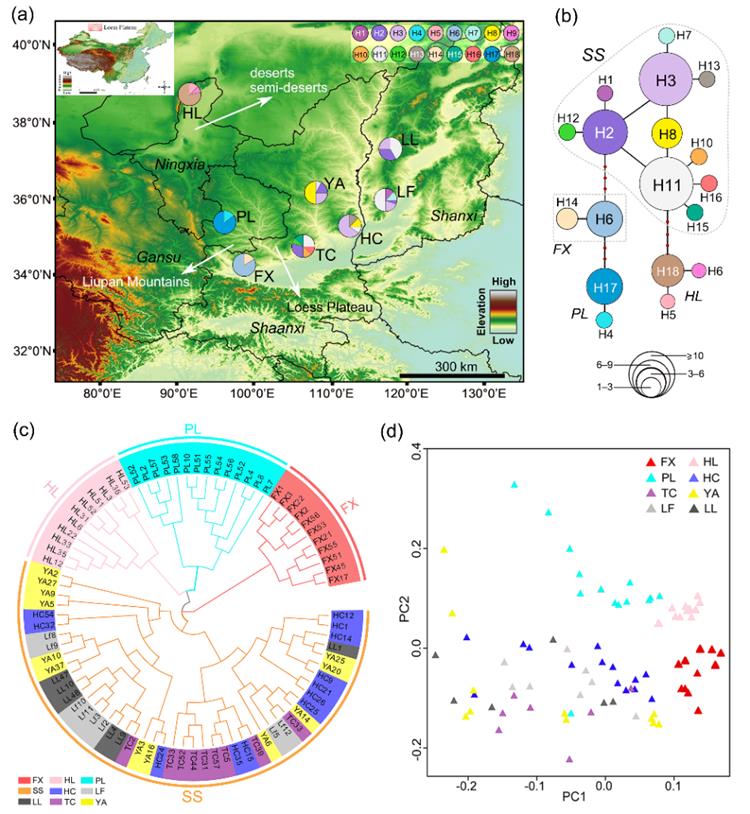Recently, the research group led by Prof. Wei Cong from the Insect Systematics and Diversity Team of our college published a research paper titled "The impact of geographic isolation and host shifts on population divergence of the rare cicada Subpsaltria yangi" in the evolutionary biology journal Molecular Phylogenetics and Evolution. Liu Yunxiang, a doctoral graduate of our college, is the first author, with Prof. Wei Cong as the corresponding author. Prof. Christopher Dietrich from the University of Illinois at Urbana-Champaign in the United States also participated in this research.
The nymphs of cicadas spend their entire lives underground, feeding on the sap of tree roots. The adults have weak flying abilities, short occurrence periods, and are difficult to migrate long distances. Comprehensive research on the phonetic phenotypic differentiation, genetic diversity differentiation, and phylogeography of these insects can help unravel some special challenges in biological evolution and phylogeographic studies.This study analyzed the phonetic structure, genetic differentiation, population historical dynamics, and distribution changes of the Subpsaltria yangi cicada based on phonetic data, genomic data, and ecological data, using a combination of bioacoustics, molecular systematics, and population ecology methods. It also explored the impact of changes in host plants, habitats, and predatory natural enemies on the population differentiation (potential speciation) of this species.The study revealed that the Subpsaltria yangi cicada has evolved into four major lineage branches, with significant differentiation in their genetic and phonetic structures, which are closely related to the distance between distribution areas (geographic isolation), habitats, and differences in host plants. The relatively widely distributed lineage on the Loess Plateau underwent significant population expansion around 0.130–0.115 Ma (million years ago) during the last interglacial period. Geographic barriers (especially the deserts and semi-deserts at the southern foot of the Helan Mountains), climate evolution, and the emergence of the Pleistocene Ice Age are the main reasons for the genetic differentiation, phenotypic differentiation (changes in phonetic structure), and the formation of the phylogeographic structure of this species. Together with differences in host plants among different populations, they have caused the differentiation of allopatric populations and the formation of potential new species (especially in the He Lan Mountains and Kong Tong Mountains). Changes in the phonetic structure of different geographic populations of the Subpsaltria yangi cicada can reflect the phenotypic differentiation of the populations and their adaptive evolution to new environments (changes in hosts, habitats, predatory natural enemies, etc.). This is a result of natural selection further enhancing the diversification of phenotypic and ecological characteristics of species under different environmental conditions.

Figure 1: Habitats and Host Plants of Different Geographic Populations of Subpsaltria yangi
SS, Shaanxi-Shanxi Loess Plateau Region; HL, He Lan Mountains; PL, Kong Tong Mountains in Pingliang; FX, Southern Edge of the Loess Plateau in Fengxiang

Figure 2: Distribution Pattern, Haplotype Network, Phylogeny, and Population Principal Coordinate Analysis Based on Genomic Data of Subpsaltria yangi
This study provides new information for analyzing the molecular mechanisms of diversity differentiation and allopatric speciation of herbivorous insects, and also offers clues for further elucidating the correlation between allopatric differentiation and genetic differentiation, phenotypic differentiation (differentiation of courtship phonetic structure) in cicadas. The related research works was funded by the General Program of the National Natural Science Foundation of China (Grant Nos. 32070476, 32270496).
Original link:https://doi.org/10.1016/j.ympev.2024.108146